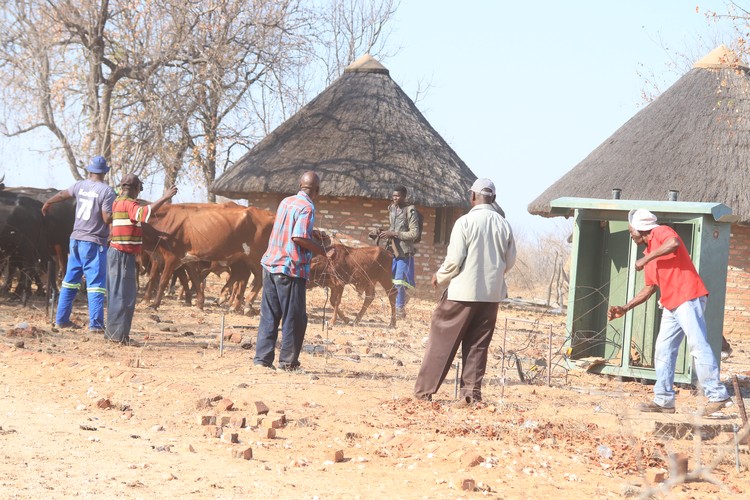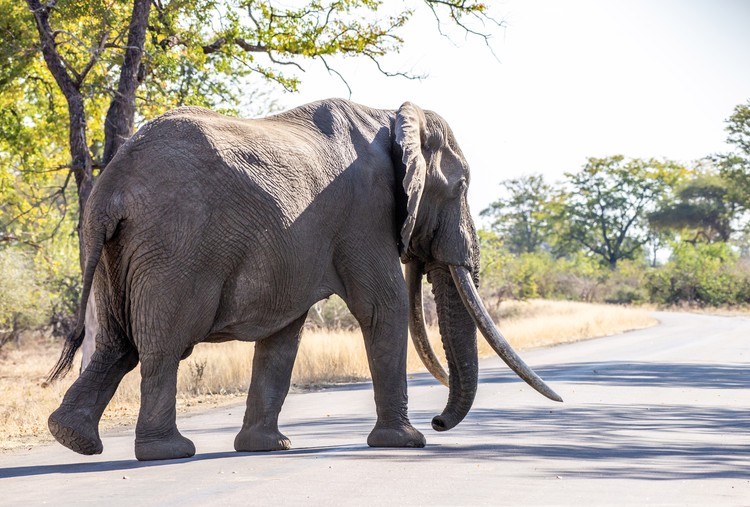Tensions rise over unfenced Kruger Park after predators kill cattle
State vet warns that livestock wandering into the park pose significant disease threat
Farmers from Mbaula Ranch and Phalakubeni villages near Giyani, Limpopo, say they’ve lost about 60 cattle to predators in the Kruger National Park and traps set by illegal hunters. Photo: Thembi Siaga
- Tensions are mounting between farmers and park rangers along unfenced areas of the Kruger National Park.
- Farmers complain that lions kill their livestock and that they are prevented from retrieving their cattle when they wander into the park.
- A state veterinarian says livestock mixing with wildlife poses a significant disease threat.
- The vet said if farmers can identify their cattle, they can be kept in quarantine for 28 days if the farmers cover the feeding costs.
Unfenced areas bordering the Kruger National Park are leading to tensions between farmers and park rangers. Farmers claim that livestock have been killed by lions. They complain that they are prevented from retrieving their cattle when they wander into the park.
According to farmers from Mbaula Ranch and Phalakubeni villages (50km from Giyani, Limpopo), they have lost about 60 cattle to predators in the park this year and to traps set by illegal hunters.
A state veterinarian at Kruger told GroundUp that having livestock enter the protected area poses a significant risk of disease and could harm conservation efforts.
Across boundaries
The battle over unfenced boundaries around Kruger National Park has been ongoing for well over a decade.
SANParks spokesperson JP Louw said the state veterinary department under the Department Agriculture, Land Reform and Rural Development was responsible for erecting the western and southern boundaries of Kruger as a disease control fence around 1960.
The government decided to fence the eastern boundary of the park in 1974, he said. Around 2003, part of this fencing separating Kruger from the Limpopo National Park was removed to create wildlife corridors within the Great Limpopo Transfrontier Park.
Louw said the remaining part of this fence will also be removed as part of an agreement with Mozambican authorities.
He said the fence on the western boundary, which separated the park from other conservation land, had also been taken down to incorporate these areas into the Great Limpopo Transfrontier Conservation Area. These areas also border the 8,000-hectare Mthimkhulu Game Reserve and the 42,000-hectare Letaba Ranch Game Reserve area (where Mbaula Ranch and Phalakubeni villages lie). The reserves are part of the transfrontier park and fall under the jurisdiction of Limpopo’s economic development, environment and tourism department.
A big male tusker outside Shingwedzi camp in Kruger National Park. The Department of Environment told GroundUp that fencing challenges at the Letaba Ranch was primarily caused by elephants. Archive photo: John Yeld
Demand for fences
Now farmers are calling for these fences to be reconstructed to allow their cattle and livestock to graze freely without the risk of them wandering into protected areas.
“Since there is no fence, our cattle are sometimes killed by animals like lions or by traps set by illegal hunters,” says farmer Billy Mkansi.
Some farmers also complained that they are being prevented from reclaiming cattle that enter the park. “More than 100 of my cattle entered Kruger National Park on 1 September, and I cannot retrieve them because rangers prevented me from doing so,” said Mackson Ngoveni.
Letter Mabunda, secretary of Stock Forum Farmers, said that after the fence was dismantled, they tried to restore it but they could not maintain it.
The management of livestock that stray into protected areas is governed by laws aimed at protecting wildlife and managing disease risks. The National Environmental Management: Protected Areas Act restricts the recovery of livestock within these zones.
Dr Lin-Mari de Klerk-Lorist, state veterinarian at Kruger, said livestock care is the farmers’ responsibility. She said that issues with the fence had been raised with the community.
Regarding protocols for reclaiming livestock, De Klerk-Lorist said removing animals from a disease-controlled area is not allowed. Authorities can seize and destroy strays due to concerns over disease control.
“If a cattle owner can prove through a registered stock theft claim that their cattle was stolen or driven into the park, our department will assist to capture and bring them to a quarantine area for at least 28 days. If the owner is not prepared to feed the cattle in quarantine, then the cattle will be sent for slaughter,” she said.
Isaac Phaahla, SANParks spokesperson, said Kruger has recorded numerous crimes along its western boundary and increasing pressure from elephants. He said it is irresponsible of cattle owners not to secure their livestock at night, as strays face predation and disease. The park is budgeting to restore sections of the fence under its responsibility, he said.
Zaid Kalla, spokesperson for the Limpopo economic development, environment and tourism department, acknowledged fencing challenges on one side of the Letaba Ranch, and said it was primarily caused by elephants. He said that an electrified fence has since been installed but human interference remains a significant issue.
“Community members continue to cut the remaining fence to allow livestock grazing and facilitate illegal access for poaching,” he said.
Kalla urged the neighbouring communities to work with park rangers and the authorities to ensure the safety of all.
Support independent journalism
Donate using Payfast

Don't miss out on the latest news
We respect your privacy, and promise we won't spam you.
Next: About 100 people march in Khayelitsha against gun crimes and extortion
Previous: The health and economic costs of emissions at Kusile power plant
© 2024 GroundUp. This article is licensed under a Creative Commons Attribution-NoDerivatives 4.0 International License.
You may republish this article, so long as you credit the authors and GroundUp, and do not change the text. Please include a link back to the original article.
We put an invisible pixel in the article so that we can count traffic to republishers. All analytics tools are solely on our servers. We do not give our logs to any third party. Logs are deleted after two weeks. We do not use any IP address identifying information except to count regional traffic. We are solely interested in counting hits, not tracking users. If you republish, please do not delete the invisible pixel.


